

 It’s summertime and you long for white wines, right? There are so many white wines suitable for summer food. You can find a white wine to go with everything you eat, except perhaps lamb and beef. But if you need too, you could probably find some powerful whites that could take on these two kinds of meat, too. White wines from Languedoc and the Southern Rhone Valley, for instance.
It’s summertime and you long for white wines, right? There are so many white wines suitable for summer food. You can find a white wine to go with everything you eat, except perhaps lamb and beef. But if you need too, you could probably find some powerful whites that could take on these two kinds of meat, too. White wines from Languedoc and the Southern Rhone Valley, for instance.
In summer you probably have the occasional meal outdoors. Is it harder to drink wine outdoors? Maybe not to drink wine. But to taste the wine outdoors, yes, it is a bit trickier. The wind, the flowers, the ocean, or whatever it may be is competing with the wine’s aromas.
We do not usually drink our rare and precious bottles outdoors. The wines that we really want to experience all the nuances of, we don’t drink outdoors. But otherwise it’s just a pleasure to enjoy a meal outside. And in Paris, we don’t have many wasps or mosquitos, a big plus!
We are also keen to mention that we have a very first English language edition of one of our books coming out this autumn. The English title is Biodynamic, Organic and Natural Winemaking, Sustainable Viticulture and Viniculture. It is a book for those who want to understand what this is about and want to find some of the best wine producers. Launch details are not yet ready so we will come back with more info later.
More and more of our wine friends have found the way to the social network (a nicer sounding name would have been welcome). It is nice with a new way to keep in contact.
If you are on Facebook, do “like” our pages. We would very much appreciate it!:
And if you are on Twitter you can find BKWine on Twitter here.
A brief reminder on this autumn’s wine tours. The Bordeaux tour is fully booked so we cannot take any more Bordeaux lovers on that. But we do have spaces left on the wine tour to the Douro Valley vineyards. The Douro is a strong contender for being the world’s most spectacular vineyard landscape. And the wines are excellent too. Book now.
We have now also officially launched the two “winter” wine tours, two far-away wine destinations. You can read more about it in the Brief. Both tours are to the southern hemisphere and require perhaps a little bit more forward planning. Both are extraordinary tours, if I may say so myself… Book now:
- Argentina and Chile, in February
- South Africa, in March
Have a nice summer. This Brief gives you some extra summer reading.
Britt & Per
PS: Recommend to your friends to read the Brief !
– – – – –
What’s on at BKWine Tours
- Bordeaux, September 17-21
- Douro Valley in Portugal, October 22-26
- Chile and Argentina in South America, January 31 – February 15, 2015
- South Africa, February 27 – March 9, 2015
For more information please contact us on email or on phone (we’re on French time), or go to our wine travel site on www.bkwinetours.com!
We also make custom designed wine tours – on-demand tours for you and a group of friends, for your company (maybe to scout new winegrowers?), for a special event… We can combine winery visits and wine touring with other activities: gastronomic workshops, visit to an oyster farm, truffles hunting, cheese making, and more. More info on the custom designed and bespoke BKWine wine tours and travel here!
Wine tours in Finnish: We also do wine tours in Finnish. And in German, Norwegian, Spanish…
Do you want the latest news and updates on our wine travel activity? Subscribe here! (Second alternative BKWineTours.com)
From the World of Wine
New yeast gives lower alcohol content
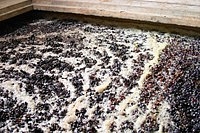 The chemical company Lallemand Oenologie, in collaboration with the French Institute for Agricultural Research INRA, has through research obtained a Saccharomyces cerevisiae yeast that enables you to produce a wine with lower alcohol than normal without affecting wine quality. It should be noted that the yeast is not genetically modified. Research on yeast that produces less alcohol has often been about genetic modification.
The chemical company Lallemand Oenologie, in collaboration with the French Institute for Agricultural Research INRA, has through research obtained a Saccharomyces cerevisiae yeast that enables you to produce a wine with lower alcohol than normal without affecting wine quality. It should be noted that the yeast is not genetically modified. Research on yeast that produces less alcohol has often been about genetic modification.
This particular yeast converts the sugar in the must into lower levels of alcohol than regular yeast. As an example: If a wine has a potential alcohol content of 15.8%, it will after the fermentation only show an alcohol level of 14.5%. Instead, it has a higher proportion of glycerol. We don’t know if this higher glycerol content will affect the character of the wine. At Lallemand they say that the quality is not affected. The yeast is not yet on the market.
Read more about yeast that give less alcohol on winemak-in.com
New name for prestigious chateau in Pauillac
Perhaps it is only the tour guides in Bordeaux that are thrilled by this change of names. Because Château Pichon Longueville Baron is situated opposite the Château Pichon Longueville Comtesse de Lalande. Not easy to have time to say all this in the few seconds that it takes the bus to go past the chateaux.
But now it will be easier. From the 2012 vintage the name of Château Pichon Longueville Baron is formally changed to Château Pichon Baron. This has actually been what most people have called the chateau and the wine for a long time.
Château Pichon-Baron is owned since 1987 by French insurance company AXA and is one of the most prestigious 2ème grand cru classé 1855 in Médoc. Read more: idealwine.net
Per Èl 2010, Domaine Saladin & Filles, Côtes du Rhône Villages Blanc | Britt’s Wine of the Month
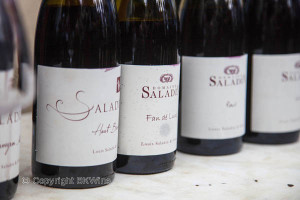 This is a white wine from the southern Rhone Valley. It is delicious, rich and flavourful with intensity and concentration. I have a weakness for white Rhône wines, and this one did not disappoint me. The grape varieties are Clairette rose, Marsanne, Grenache Blanc, Viognier and Bourboulenc. The grapes are harvested early in the morning while it is still cool outside. The natural yeast is used for the fermentation, which is long and at low temperature. Ageing on the lees with batonnage in stainless steel tanks.
This is a white wine from the southern Rhone Valley. It is delicious, rich and flavourful with intensity and concentration. I have a weakness for white Rhône wines, and this one did not disappoint me. The grape varieties are Clairette rose, Marsanne, Grenache Blanc, Viognier and Bourboulenc. The grapes are harvested early in the morning while it is still cool outside. The natural yeast is used for the fermentation, which is long and at low temperature. Ageing on the lees with batonnage in stainless steel tanks.
Domaine Saladin is situated outside the village of Saint-Marcel-d’Ardèche on the west side of the Rhone. The estate is managed very ambitiously by sisters Marie-Laurence and Elizabeth. Read more: www.domaine-saladin.com.
Press release on the winter wine tours: South America and South Africa
We have now officially launched the winter wine tour program. We start with a wine tour to the two neighbouring countries Argentina and Chile in South America. Later in March there will be a wine tour to South Africa.
Read the full press release with all the details on BKWine’s Travel Blog: New winter wine & food tours from BKWine: Chile & Argentina, and South Africa. [divider_flat]
Delving deep into amarone wines from Valpolicella
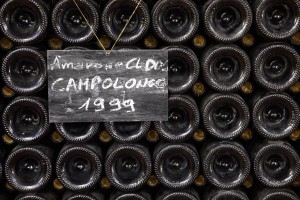 When Mr Amarone, Masi’s boss Sandro Boscaini, came to Stockholm we met him over a big wine tasting. In the Valpolicella district in the Veneto region in northern Italy they make the famous Amarone wine. There are both large well-known winemakers and small wineries. Masi is one of the largest.
When Mr Amarone, Masi’s boss Sandro Boscaini, came to Stockholm we met him over a big wine tasting. In the Valpolicella district in the Veneto region in northern Italy they make the famous Amarone wine. There are both large well-known winemakers and small wineries. Masi is one of the largest.
Sandro Boscaini has for many years been a central figure for Amarone and one of those who have been instrumental raising the quality and making the wines so immensely popular.
We pick out the best wines and explain why Sandro Boscaini is worried about the future of amarone. Read more on BKWine Magazine: Amarone in depth and breadth, we taste some top wines from Masi.
A must-visit in Florence: the new food market with restaurant, wine bar and pizza
A new top destination in the centre of Florence has just opened, Mercato Centrale. In the first half of 2014 something exciting happened on the food heaven in Florence. A new very good bistro, several restaurants and a food shopping market opened in Florence. The range of interesting places for us foodies is getting better and better. Most recently the doors to the upper floor on Florence’s main food market Mercato Centrale opened.
Read more on BKWine’s Travel Blog: A new food palace in Florence: restaurants, bistro, food market.
One good excuse to come to Florence is to participate in one of BKWine’s wine and food tours to the Tuscan vineyards.
Fermentation in reverse order
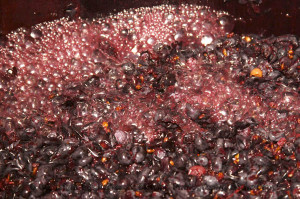 Danish chemical company Chr. Hansen launches something very new just in time for the harvest 2014. This brand new something is called Viniflora NoVA and is a new generation of lactic bacteria isolated from fermenting must. The research has been done in collaboration with Professor Maret du Toit at the University of Stellenbosch in South Africa.
Danish chemical company Chr. Hansen launches something very new just in time for the harvest 2014. This brand new something is called Viniflora NoVA and is a new generation of lactic bacteria isolated from fermenting must. The research has been done in collaboration with Professor Maret du Toit at the University of Stellenbosch in South Africa.
Lactic bacteria are used in winemaking to start the malolactic fermentation, a process that all red wines undergo and which transforms malic acid into softer lactic acid. Normally, the wine undergoes malolactic fermentation after the alcoholic fermentation. With Viniflora NoVA it works just the other way around. The malolactic process is made in the grape must, before the alcoholic fermentation. The benefits are many say Chr. Hansen. The whole fermentation process goes faster, the risk that you get off flavours or volatile acidity during the first critical days before the alcoholic fermentation start is reduced, and you may get by on a smaller amount of sulphur.
Read more on chr-hansen.com.
Nice wines tasted since last time
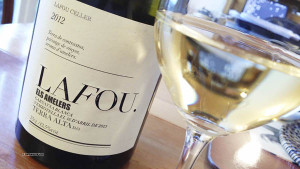 Over the past month (and some) we have seen a wild mix of different wines pass our glasses:
Over the past month (and some) we have seen a wild mix of different wines pass our glasses:
- Wonderful Rioja
- Delicious sherry
- Surprising white wines from Catalonia
- Excellent old chenin blanc from the Loire Valley, and some not so old cabernet franc
- Classic Burgundies
- And a yummy Valpolicella that really does not exist
This and much more. Read more about these wines and other that we have pulled the cork on on BKWine Magazine: Uncorked: Good wines we have tasted recently, May 2014.
Rhône Festival in Denmark
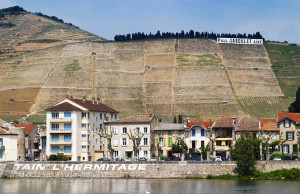 Inter Rhône and The Wine Company in Denmark invites you to the eleventh edition of “Rhônevinfestivalen” (the Rhône Festival) on Saturday, September 20. The festival takes place at Dansk Vincenter in Avedøre just outside of Copenhagen between 11 am and 4 pm.
Inter Rhône and The Wine Company in Denmark invites you to the eleventh edition of “Rhônevinfestivalen” (the Rhône Festival) on Saturday, September 20. The festival takes place at Dansk Vincenter in Avedøre just outside of Copenhagen between 11 am and 4 pm.
There will be more than 30 exhibitors and you will be able to taste around 300 different wines from some of the best producers in this fabulous southern French region. More information is available here www.rhonevinfestival.dk. Here you will also find information on how to buy your ticket, which you should do well in advance. [divider_flat]
Castello di Semivicoli, Abbruzzo Pecorino DOC, 2013 | Åsa’s wine of the month
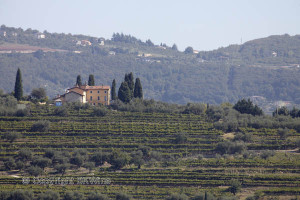 I bought this wine from my butcher. Italian butchers often have an excellent selection of wines. Our butcher, Sergio, was so happy that I chose a pecorino wine from Abbruzzo, my wine of the month, so that he gave me a discount. As mentioned, the wine is made from the grape called pecorino and comes from the region called Abbruzzo. The producer’s name is Masciarelli and is excellent.
I bought this wine from my butcher. Italian butchers often have an excellent selection of wines. Our butcher, Sergio, was so happy that I chose a pecorino wine from Abbruzzo, my wine of the month, so that he gave me a discount. As mentioned, the wine is made from the grape called pecorino and comes from the region called Abbruzzo. The producer’s name is Masciarelli and is excellent.
Very nice nose, citrus and pears with a slight sweetness in the background. On the palate it has a good body – some “fat” – with good acidity and structure. Long aftertaste with some bitter notes. Thirteen percent ABV. Clearly a new favourite. We had it to a vegetarian lasagne. But don’t tell my butcher! Price around 13 euro. [divider_flat]
We drink more prosecco than ever.
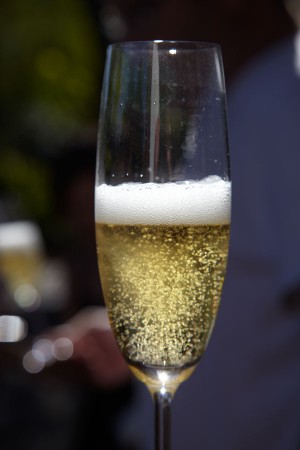 Well, not us personally, but all of us together. Prosecco, the Italian sparkling wine, has record sales. Prosecco is just one of many wines that are made in Veneto, the northern Italian region around Verona and Venice.
Well, not us personally, but all of us together. Prosecco, the Italian sparkling wine, has record sales. Prosecco is just one of many wines that are made in Veneto, the northern Italian region around Verona and Venice.
It is one of Italy’s most productive wine regions. All in all they produce 7.5 million hectolitres of wine. As often in Italy, the contrasts are big as are the variations in style.
In Veneto dinner starts with a Prosecco for aperitif. Then follows a white soave to the antipasti, and generously fruity Bardolino to the pasta, and in intense and elegant Valpolicella to the meat.
With the dessert, if it is for example some kind of chocolate, we will have a powerful amarone. Or if it more on the fruit and berries side we will choose instead an intensely sweet Recioto di Soave. And everything ends with a small, very small grappa.
What could be nicer than to sip a Prosecco and then all the other local wines on a terrace in Veneto? What about joining us on a wine tour to Verona, with amarone, Valpolicella and everything else! [divider_flat]
A selection of good organic wines
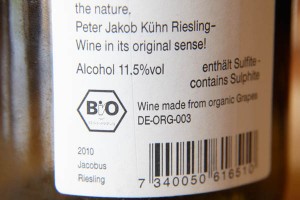 Sometimes we hear people say that they have difficulties finding good organic wines in their regular wine shop. (Here in France it is not difficult at all.) Perhaps that is because they drown in the sea of nondescript volume wines, perhaps it is something else. We have made a list of some wines that have a fairly wide distribution in prices ranging from 10 to 25 euro. Read more about them on BKWine Magazine (and watch our video from one of the producers): Organic wines, a somewhat random selection of recommended bottles. [divider_flat]
Sometimes we hear people say that they have difficulties finding good organic wines in their regular wine shop. (Here in France it is not difficult at all.) Perhaps that is because they drown in the sea of nondescript volume wines, perhaps it is something else. We have made a list of some wines that have a fairly wide distribution in prices ranging from 10 to 25 euro. Read more about them on BKWine Magazine (and watch our video from one of the producers): Organic wines, a somewhat random selection of recommended bottles. [divider_flat]
Do you like cognac? Here’s a free guide
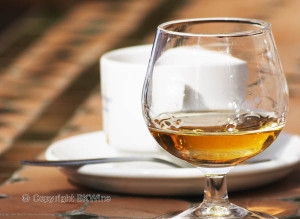 Nicolas Faith is an expert on cognac and has written extensively on it over many years. Perhaps one of the world leading experts on the spirit from Charentes. He has written a very in-depth book about this exclusive brandy. Now he has also made a shorter, more condensed version of his book. You can download it for free. Lots of tips and recommendations, information on producers and much more.
Nicolas Faith is an expert on cognac and has written extensively on it over many years. Perhaps one of the world leading experts on the spirit from Charentes. He has written a very in-depth book about this exclusive brandy. Now he has also made a shorter, more condensed version of his book. You can download it for free. Lots of tips and recommendations, information on producers and much more.
Read more on BKWine Magazine: Get a free ebook on Cognac by Nicolas Faith. [divider_flat]
Sales record for Rioja
227 million litres of wine (2.8 M hl) was sold in 2013, up 4% on 2012. This is an all time high for rioja. Never has so much Rioja been sold. A few years back Rioja was struggling. Decreasing sales. But now Rioja is apparently back, breaking records. Here are more numbers:
- 90% of sales is red wine, the remainder is split equally between white and rosé
- Rioja Crianza, the biggest category, represents 36% of sales, and “plain” Rioja 35%
- Rioja Gran Reserva is only 2% but it is the category that has seen the biggest growth, +17%
- The biggest export markets are the UK, Germany, the USA, and Switzerland. China comes on 8th place.
- The Netherlands overtook Sweden in 2013 to reach 5th place.
Read more here riojawine.com
The Frenchman who emigrated to Argentina and became leader in organic wines
Jean Bousquet comes from the Languedoc in southern France. He emigrated to Argentina in the 90s and settled in Mendoza. Today he is one of Argentina’s biggest producers of organic wines. Very good wines. When you see the view from his vineyards you can understand why he settled here. We visited him on our wine tour to Argentina this past spring. Read more about Bousquet and see some mouth-watering (in more sense than one) pictures and videos from the vineyard on BKWine’s Travel Blog: A special winery visit in Argentina, at Domaine Bousquet.
If this makes you want to go to Argentina, don’t worry. Here is the solution: Join us on the next wine and food tour to Argentina and Chile that will be in February next year. Plenty of emotions guaranteed!
BKWine’s photography on Rioja in the Australian Wine Companion
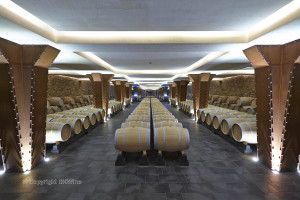 It is a particular pleasure when a feature article is fully illustrated with your pictures. It is different from having the odd image used as an illustration. (BKWine Photography provides a lot of wine, food and travel related photography to publications all over the world.)
It is a particular pleasure when a feature article is fully illustrated with your pictures. It is different from having the odd image used as an illustration. (BKWine Photography provides a lot of wine, food and travel related photography to publications all over the world.)
This is what happened recently when James Halliday’s Wine Companion in Australia did a feature article on wine travel in the Rioja wine region in Spain.
The article is written by Alex Prichard, an Australian wine educator. We happened both to be travelling last autumn in Rioja at the occasion of the Digital Wine communications Conference (#DWCC). Read more on the Rioja feature, and watch our video on it, on BKWine’s Photography blog: Wine travel feature in The Wine Companion with BKWine photography.
Sweden’s biggest wine importers
 The average consumer probably does not think very often about who is the importer behind the wine. But it can be quite interesting to look. There is a fierce competition between different importers. In Sweden, with the retail monopoly with Systembolaget, the market conditions become quite peculiar. Everyone has to sell to the monopoly, which also drastically reduces the range of wines available in Sweden. For those who know a bit about the Swedish market there are quite a few surprises on the list of the biggest wine importers. There are not many people, not even in the trade, who are aware of whom the biggest importer is.
The average consumer probably does not think very often about who is the importer behind the wine. But it can be quite interesting to look. There is a fierce competition between different importers. In Sweden, with the retail monopoly with Systembolaget, the market conditions become quite peculiar. Everyone has to sell to the monopoly, which also drastically reduces the range of wines available in Sweden. For those who know a bit about the Swedish market there are quite a few surprises on the list of the biggest wine importers. There are not many people, not even in the trade, who are aware of whom the biggest importer is.
Read more about the wine importers on BKWine Magazine: Sweden’s 10 biggest wine importers; includes some names you probably do not know.
Where do all the pressed grapes go?
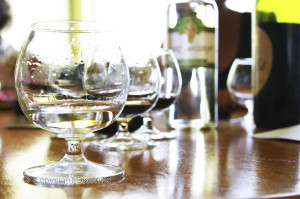 On August 1, it will cease to be mandatory for winemakers in France to deliver their pressed skins to a distillery. This means that growers now have several options for what to do with the skins after pressing. They can either continue to send them to a distillery or they can use them as nutrients in the vineyard or they can convert them into bio-gas.
On August 1, it will cease to be mandatory for winemakers in France to deliver their pressed skins to a distillery. This means that growers now have several options for what to do with the skins after pressing. They can either continue to send them to a distillery or they can use them as nutrients in the vineyard or they can convert them into bio-gas.
The decision is not popular with the some 50 distilleries throughout France. The cooperatives take care of 60% of all marc (grape residue) and they have managed to obtain rules that will make it more difficult for growers who decide to do something else than sending the marc to the distillery. For all other uses, the producers have to prove that they have not pressed the grapes too hard. This is done by weighing the marc and by doing an alcohol analysis at an approved laboratory. If the marc is going to be used in the vineyard the grower also have to make a plan for this and submit it to the relevant authorities, especially the police authority for water protection. I don’t think the distilleries have anything to worry about. It does seem easier just to send the marc to them.
Read more on La Vigne
Barolo and Barbaresco – new UNESCO World Heritage Site
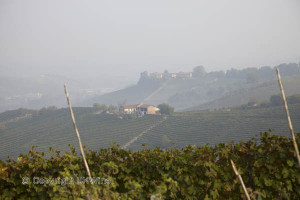 Italian regions of Langhe-Roero and Monferrato, which includes the well-known wine regions of Barolo and Barbaresco, were on June 22 appointed UNESCO World Heritage Site. Congratulations to all the producers we know in the region! And we agree with UNESCO when they say that the region of Langhe Roero and Monferrato is one of the most scenic wine country landscapes that can be found.
Italian regions of Langhe-Roero and Monferrato, which includes the well-known wine regions of Barolo and Barbaresco, were on June 22 appointed UNESCO World Heritage Site. Congratulations to all the producers we know in the region! And we agree with UNESCO when they say that the region of Langhe Roero and Monferrato is one of the most scenic wine country landscapes that can be found.
The appointment includes the seven municipalities in Barolo DOCG, Barolo, Castiglione Falletto, Grinzane Cavour, La Morra, Monforte d’Alba, Novello and Monforte d’Alba, and two municipalities in Barbaresco DOCG, Barbaresco and Neive.
Read more on: langhevini.it and whc.unesco.org.
And on BKWine’s Travel Blog!: Barolo and Barbaresco in the Piedmont becomes a UNESCO World Cultural Heritage site.
The book about wines from the Jura
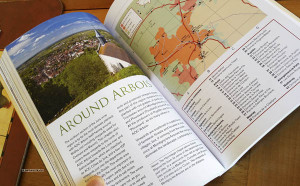 The book Jura Wine by Wink Lorch has all the information that you may ever need on wine from the Jura wine region in eastern France. It contains wine producer profiles, detailed information about the vineyards, the history, the grape varieties and much, much more. It is self-published and available online.
The book Jura Wine by Wink Lorch has all the information that you may ever need on wine from the Jura wine region in eastern France. It contains wine producer profiles, detailed information about the vineyards, the history, the grape varieties and much, much more. It is self-published and available online.
Read the full book review, including a video about the book, on BKWine Magazine: Jura Wine by Wink Lorch | Book Review. [divider_flat]
Everyone has a camcorder on the phone today. Improve your videos dramatically
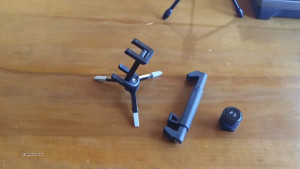 If you have started experimenting with making video with your smart-phone then there is an easy thing you can do to improve the video quality. The technical quality of smart phone videos is today very good, excellent. But a common problem is that the videos are shaky. A simple and effective solution is to use a tripod. But to start with there is no tripod mount on a smart-phone and you do not really want to carry around a heavy tripod if you can avoid it.
If you have started experimenting with making video with your smart-phone then there is an easy thing you can do to improve the video quality. The technical quality of smart phone videos is today very good, excellent. But a common problem is that the videos are shaky. A simple and effective solution is to use a tripod. But to start with there is no tripod mount on a smart-phone and you do not really want to carry around a heavy tripod if you can avoid it.
There is a simple and convenient solution to this problem that can radically improve your videos. Read more on BKWine’s Photography Blog: Radically improve your smartphone video photography with a tripod mount.
All videos that we at BKWine have done recently have done recently have been shot with a regular smartphone.
Sugar or concentrated grape must?
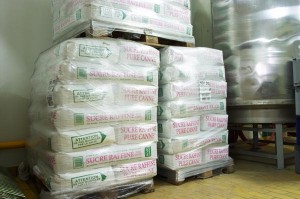 The question of chaptalisation versus enrichment with concentrated grape must continue to stir up emotions in southern France.
The question of chaptalisation versus enrichment with concentrated grape must continue to stir up emotions in southern France.
At the Vins IGP congress recently the producers lamented the fact that the state subsidies for enrichment with concentrated grape must has been removed. Chaptalization, meaning enrichment with regular sugar, is much cheaper, but prohibited in the south of France. Prohibited, mind you, on the wine producers’ request. So, they now have to use the more expensive method, enrichment with concentrated grape must, three times more expensive than sugar. But they do not want to pay for it, the state should do. And they think it is unfair that the wine producers in the north of France are allowed to chaptalize.
We have asked the question many times, but here we go again: Why do they have to enrich their wines at all in the south of France? Do the producers of IGP wines in Languedoc harvest early (for safety) with low potential alcohol (10% is the minimum for an IGP Pays d’Oc) and then enrich up to 12-13%? Non, forbid all chaptalisation and enrichment. Everywhere. There is even a trend nowadays for low alcohol wines.
Read more about enrichment in southern France at La Vigne
What to do to sell more wine in Sweden
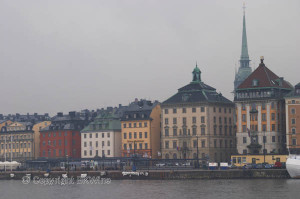 The Italian online magazine WineMeridian has just published an interview with us on how better to sell wines in Sweden. Or to put it in another way, we explain a bit about how the Swedish wine market works and the market dynamics that there are.
The Italian online magazine WineMeridian has just published an interview with us on how better to sell wines in Sweden. Or to put it in another way, we explain a bit about how the Swedish wine market works and the market dynamics that there are.
You can read more about how the Swedish market functions, for example that it is very trend driven and also very “single-minded” in some ways, on BKWine Magazine: What you need to do to sell your wines better in Sweden. [divider_flat]
Maury Sec, a new appellation
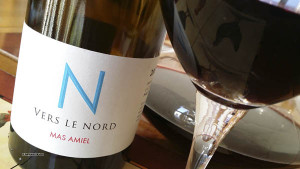 New appellations are created now and then in France. In 2011, a new wine with its own appellation appeared, Maury Sec. Maury is a small village down in Roussillon, in southern France. The village has long been known for its sweet Vin Doux Naturel wines. But now producers also can make a dry red wine from the same terroir. The word Sec (dry) must appear on the label.
New appellations are created now and then in France. In 2011, a new wine with its own appellation appeared, Maury Sec. Maury is a small village down in Roussillon, in southern France. The village has long been known for its sweet Vin Doux Naturel wines. But now producers also can make a dry red wine from the same terroir. The word Sec (dry) must appear on the label.
It is a beautiful region, Maury, between Corbières and the Pyrenees mountains. It is desolate and often spectacular. The schist soil is poor and hard to work. The stunning ruin of the Cathar Quéribus castle is nearby.
The most famous producer in Maury is Mas Amiel. They make same very delicious Maury VDN. But the other day we had the opportunity to try their Maury Sec Cuvée N Vers Le Nord 2012. The wine comes from a specific parcel of two hectares called La Devèze. The wine is one in a series of four wines known as Terres Rares. With these wines Mas Amiel wants to show the variation found in the soil and terroir of their estate. In “N Vers Le Nord” grenache dominates and is supplemented with 8% of syrah. The colour is extremely strong and you hardly believe it is a Grenache wine. The nose is intense and filled with ripe dark berries, black olives and black currants. The taste is balanced, well-structured and the finish is very fresh. This wine proves that it was a good idea to allow producers to make dry Maury wines. Indicative price 19.50 euros. Read more masamiel.fr
Ambitious cooperatives in the Rhône Valley merge
Two ambitious cooperative in the southern Rhone Valley have merged. It is the Caves des Vignerons de Caractère in Vacqueyras and Balma Venitia in Beaumes de Venise. There are both quite small cooperatives that work well and are investing heavily in sustainable wine growing. Together, they will account for 8 million bottles of wine from Gigondas, Vacqueyras, Beaumes de Venise, Muscat de Beaumes de Venise etc. The new union will be called Vignerons des Dentelles. A suitable name, since both have the impressive mountains les Dentelles de Montmirail just around the corner.
The region around the Dentelles Mountains is perhaps the most beautiful part of the southern Rhone Valley. The villages are very picturesque. It feels as if time has stood still for the last few hundred years. Around the villages are the vineyards, sometimes also olive groves and fruit orchards. And not least, here the qualities of the wines have improved enormously the last 5-10 years.
If you are in the area, don’t forget that both cooperatives in the Vignerons des Dentelles have superb, high class restaurants.
Read more: vigneronsdecaractere.com and beaumes-de-venise.com.
And if you ever feel tempted to go visiting the vineyards in the Southern Rhone valley, know that BKWine does wine tours to the Rhone Valley, including Vacqueyras, Chateauneuf, Gigondas and much more.
Polite competition or back-stabbing in the wine business? New book gives an answer
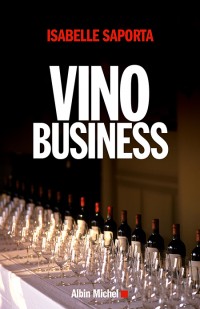 There is a vicious power game going on behind the beautiful chateaux façades of Bordeaux. At least according to Isabelle Saporta, a French journalist who has written an intriguing book about this particular subject. Among the most famous and prestigious chateaux, vino business is deadly serious and, just as in love and war, all methods seems to be fair. If you thought the chateaux were all good neighbours, then you have deceived yourself.
There is a vicious power game going on behind the beautiful chateaux façades of Bordeaux. At least according to Isabelle Saporta, a French journalist who has written an intriguing book about this particular subject. Among the most famous and prestigious chateaux, vino business is deadly serious and, just as in love and war, all methods seems to be fair. If you thought the chateaux were all good neighbours, then you have deceived yourself.
Isabelle Saporta has received a lot of criticism after writing this book, not surprisingly from the wine trade but also from some established wine media. She is not herself from the wine sector but rather a “regular” journalist. We agree with much of what she says in her very interesting book. Read the full book review on BKWine Magazine: Vino Business: Political manoeuvring among classified growths | Book Review. [divider_flat]
Prices are stable for vineyard land in France, according to SAFER
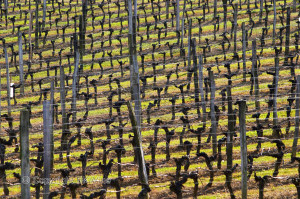 At the SAFER press conference in late May, it was announced that the average price in France of vineyard land with AOP status in 2013 was 131 600 euros per hectare. This was virtually the same as in 2012. However, it has become almost 11% more expensive to buy land in Cognac. But despite that, you will still get one hectare of vineyards in Cognac for “only” 39 000 euros on average. Vineyards without AOP status cost on average 12 100 euros, an increase of 1.7%.
At the SAFER press conference in late May, it was announced that the average price in France of vineyard land with AOP status in 2013 was 131 600 euros per hectare. This was virtually the same as in 2012. However, it has become almost 11% more expensive to buy land in Cognac. But despite that, you will still get one hectare of vineyards in Cognac for “only” 39 000 euros on average. Vineyards without AOP status cost on average 12 100 euros, an increase of 1.7%.
SAFER is an agency linked to the French Ministries of Agriculture and Finance. Read more: safer.fr [divider_flat]
The altitude makes a big difference for the wine, according to Catena Zapata
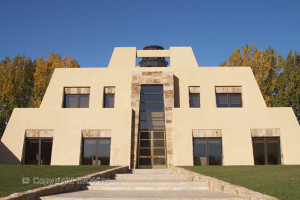 The altitude where a vineyard is has a great impact on the result, on the wine. At higher altitude the temperature is cooler. A rule of thumb is that 100 metres makes a difference of 1 degree Centigrade. The winery Bodega Catena Zapata in Mendoza in Argentina has vineyards at several different locations, up to around 1500 metres.
The altitude where a vineyard is has a great impact on the result, on the wine. At higher altitude the temperature is cooler. A rule of thumb is that 100 metres makes a difference of 1 degree Centigrade. The winery Bodega Catena Zapata in Mendoza in Argentina has vineyards at several different locations, up to around 1500 metres.
BKWine met two of Catena Zapata’s winemakers over a wine tasting that was a very good illustration of the altitude effect. Read more about altitude and wine on BKWine Magazine: An illustration of the importance of altitude for a wine by Catena Zapata, Mendoza, Argentina. [divider_flat]
Business, environment and customer response have given Sweden a winery on the Skåne plains
 Nordic Sea Winery. It immediately turns very international. An English name on a plant in Sweden, created by a Greek, producing wines from countries such as Italy, Australia, and South Africa. Oenoforos has invested SEK 500 million (almost 50 million euro) on building a winery that produces 25 million litres of wine a year and has six resident winemakers. But it is not just about scale, but also customer relations and environmental concerns.
Nordic Sea Winery. It immediately turns very international. An English name on a plant in Sweden, created by a Greek, producing wines from countries such as Italy, Australia, and South Africa. Oenoforos has invested SEK 500 million (almost 50 million euro) on building a winery that produces 25 million litres of wine a year and has six resident winemakers. But it is not just about scale, but also customer relations and environmental concerns.
BKWine was on site and met the CEO Takis Soldatos when the Nordic Sea Winery was opened in Skåne. Read more on BKWine Magazine: A state-of-the-art winery in Sweden? Yes: Nordic Sea Winery. [divider_flat]
Wine events calendar
Send us an email if you have some event you want on the calendar.
Don’t be an egoist! Share with your friends and other wine enthusiasts! Forward the Brief to your friends! Suggest that they sign up for a free subscription !
© Copyright BKWine








One Response